Venturing into the industry of e-commerce, Shopify stands out as a powerful and versatile platform that enables entrepreneurs to bring their businesses to life.
With its user-friendly interface and a wide range of tools, Shopify simplifies the process of setting up an online store. However, merely setting up a shop isn’t enough; the real challenge lies in making it profitable.
However, the journey from launching to profiting is not straightforward. Success in the competitive realm of online retail requires more than just a well-designed store; it demands a strategic approach and a deep understanding of the digital marketplace.
This blog dives into 10 proven methods for achieving success on Shopify, offering insights and strategies to help you unlock the platform’s full potential.
Also, if you want to watch a quick video on how to make money on Shopify and increase your ecommerce revenue, here’s one:
What are the Methods to Make Money on Shopify: 10 Proven Tips for 2024
Here are 10 detailed and descriptive strategies for making money on Shopify in 2024:
1. Launch Your Own Shopify eCommerce Store
Launching a Shopify store is the first step toward building an online retail presence. This process involves more than just listing products; it’s about creating an immersive brand experience for your customers.
Start by conducting thorough market research to identify a niche with high demand and low saturation. This could involve trend analysis, customer interviews, and competitive research.
When designing your store, prioritize user experience by ensuring your site is easy to navigate, aesthetically pleasing, and optimized for mobile devices.
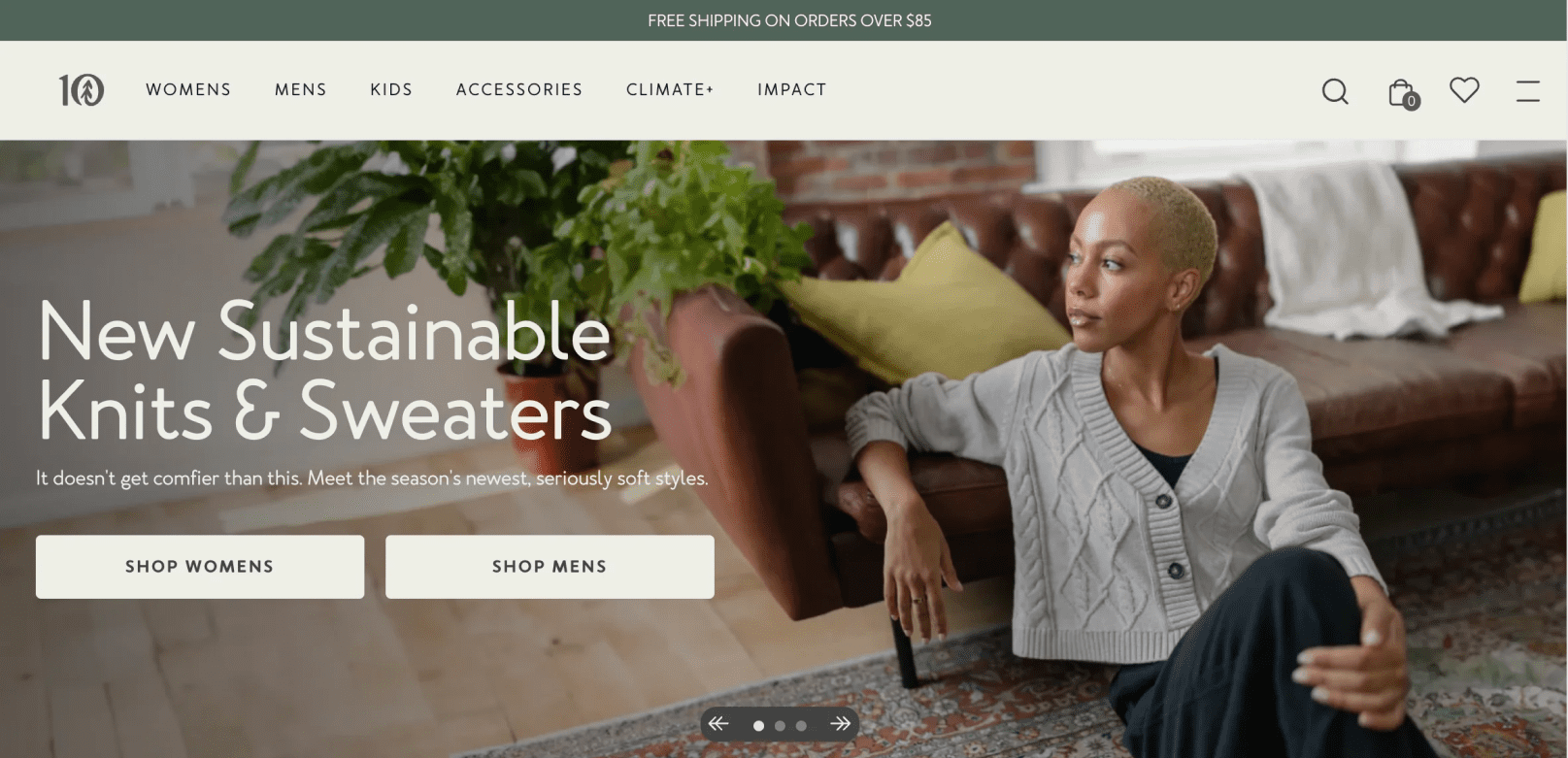
High-quality product imagery and detailed descriptions play a crucial role in converting browsers into buyers. Consider employing SEO best practices to enhance your store’s visibility on search engines, driving organic traffic to your site.
Developing a unique value proposition (UVP) is crucial for standing out in a crowded market. Your UVP should succinctly communicate what makes your brand different and why customers should choose you over competitors.
2. Buy an Existing Shopify Store
For entrepreneurs looking to hit the ground running, acquiring an existing Shopify store offers a unique opportunity.
This path allows you to bypass some of the initial challenges of starting from scratch, such as building a customer base or establishing supplier relationships. Utilize platforms like Exchange Marketplace to find stores that align with your interests and goals.
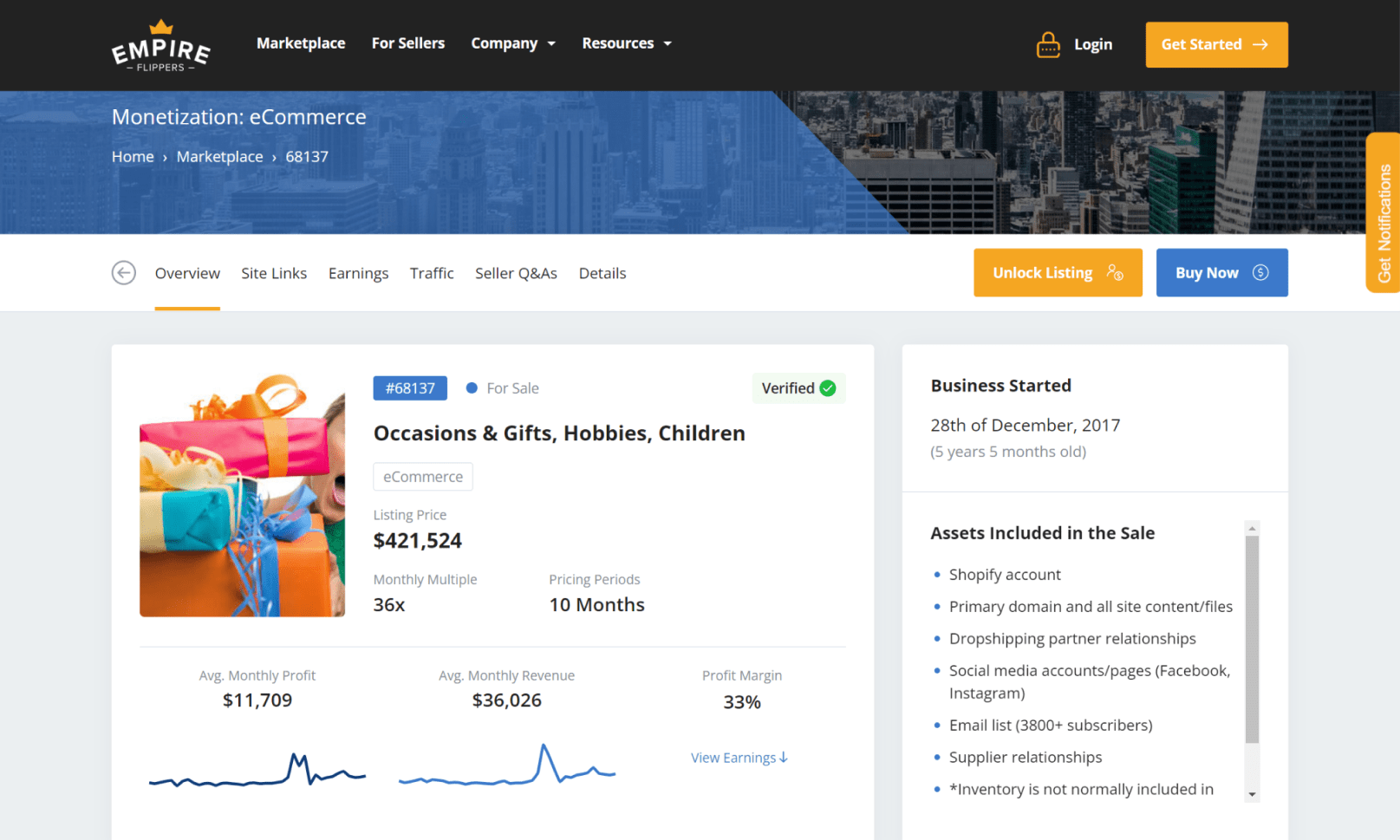
Acquiring a store requires careful consideration. Evaluate the store’s financial performance, customer base, and market position. Look for businesses with consistent revenue, a loyal customer base, and growth potential.
Understand the reasons behind the sale to avoid inheriting unresolved issues. Post-acquisition, focus on optimizing operations, expanding the product line, and enhancing marketing efforts to drive growth.
3. Become a Shopify Affiliate Marketer
Affiliate marketing involves promoting a third party’s products or services, earning a commission for each sale made through your referral. In the context of Shopify, this could mean becoming an affiliate for the Shopify platform itself or for products sold on Shopify stores.
Building a successful affiliate marketing venture on Shopify requires a strong online presence. Create content that adds value to your audience, whether through blogging, social media, or YouTube.
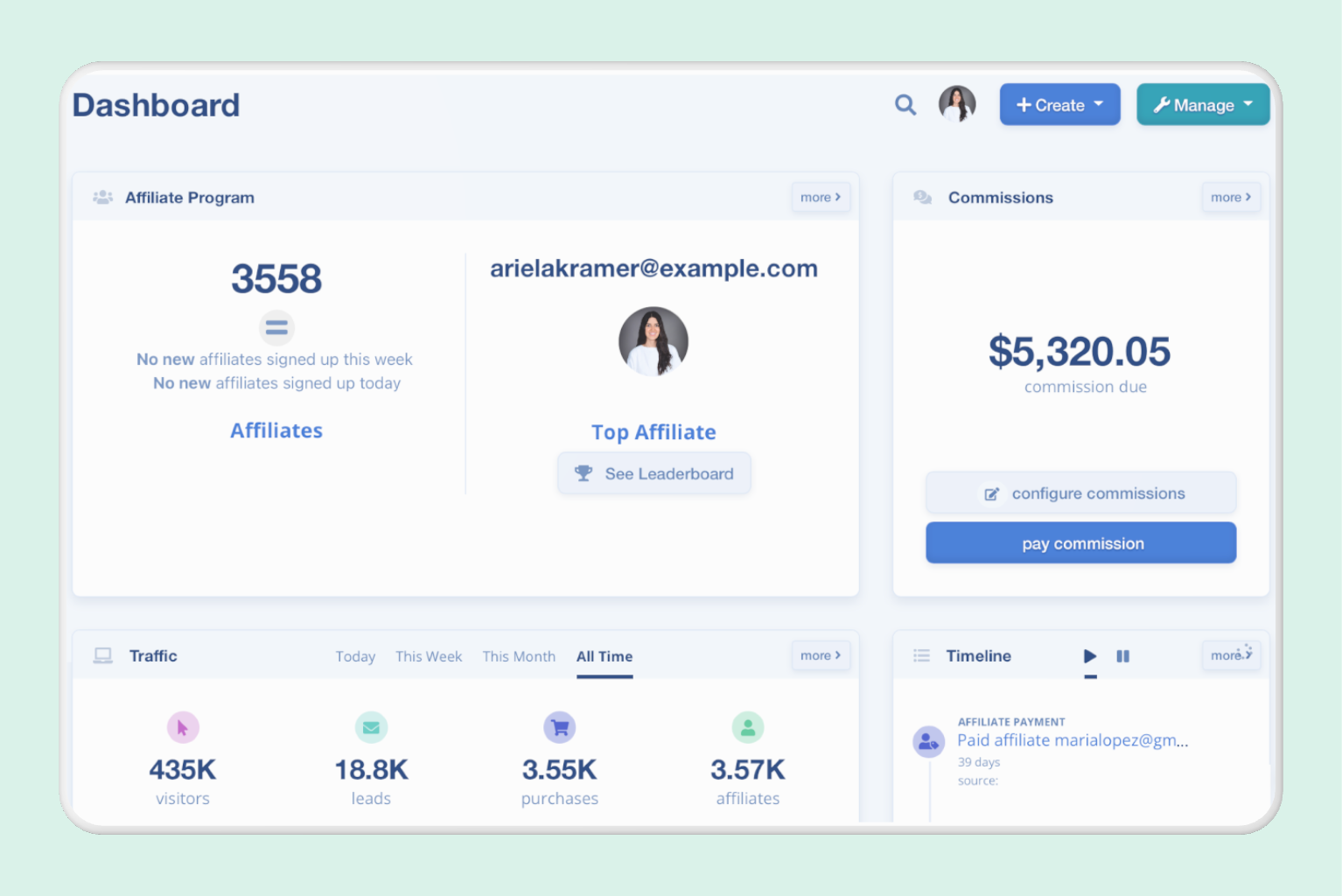
Your content should educate, entertain, or solve problems related to your niche, incorporating affiliate links naturally and ethically.
Understanding SEO is essential for driving traffic to your content. Research keywords related to your niche and incorporate them into your content to improve your search engine rankings.
4. Start a Brand on Shopify
Building a brand on Shopify is about creating a unique identity that captures the essence of your business and resonates with your target audience. This involves careful planning and execution, from selecting a brand name and designing a logo to developing a brand voice and narrative that tells your story.
Your brand should reflect in every aspect of your business, from product selection and packaging to customer service and marketing.
Consistency is key to building brand recognition and loyalty. Utilize social media, content marketing, and email campaigns to communicate your brand story and values, engaging with your audience on a personal level.
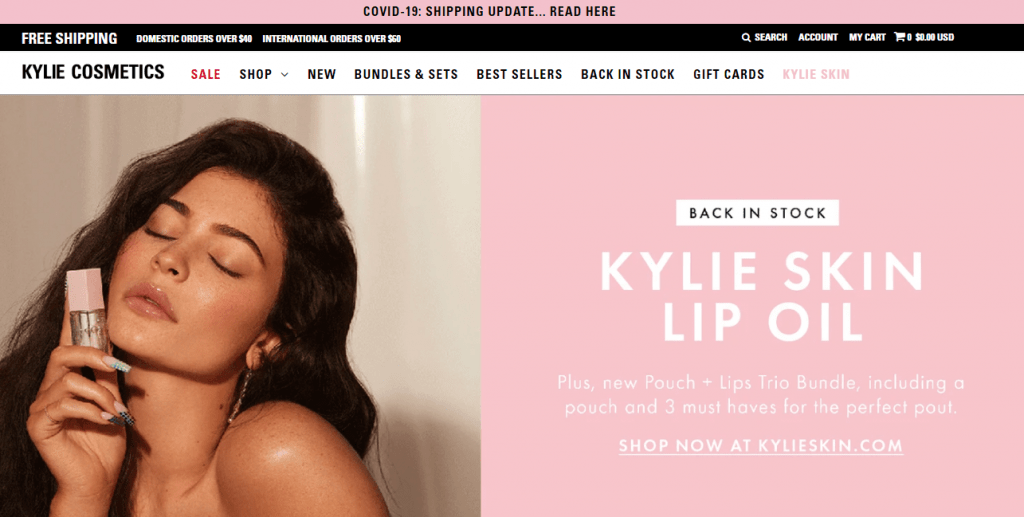
Invest in high-quality product photography and create compelling product descriptions that highlight the benefits and features of your products. Encourage customer reviews and testimonials to build social proof and trust with potential customers.
5. Build Shopify Apps
With thousands of merchants looking to optimize their stores, there’s a significant demand for innovative Shopify apps. If you have coding skills, consider developing apps that solve common problems for Shopify store owners. This could range from inventory management and shipping solutions to marketing tools and analytics dashboards.
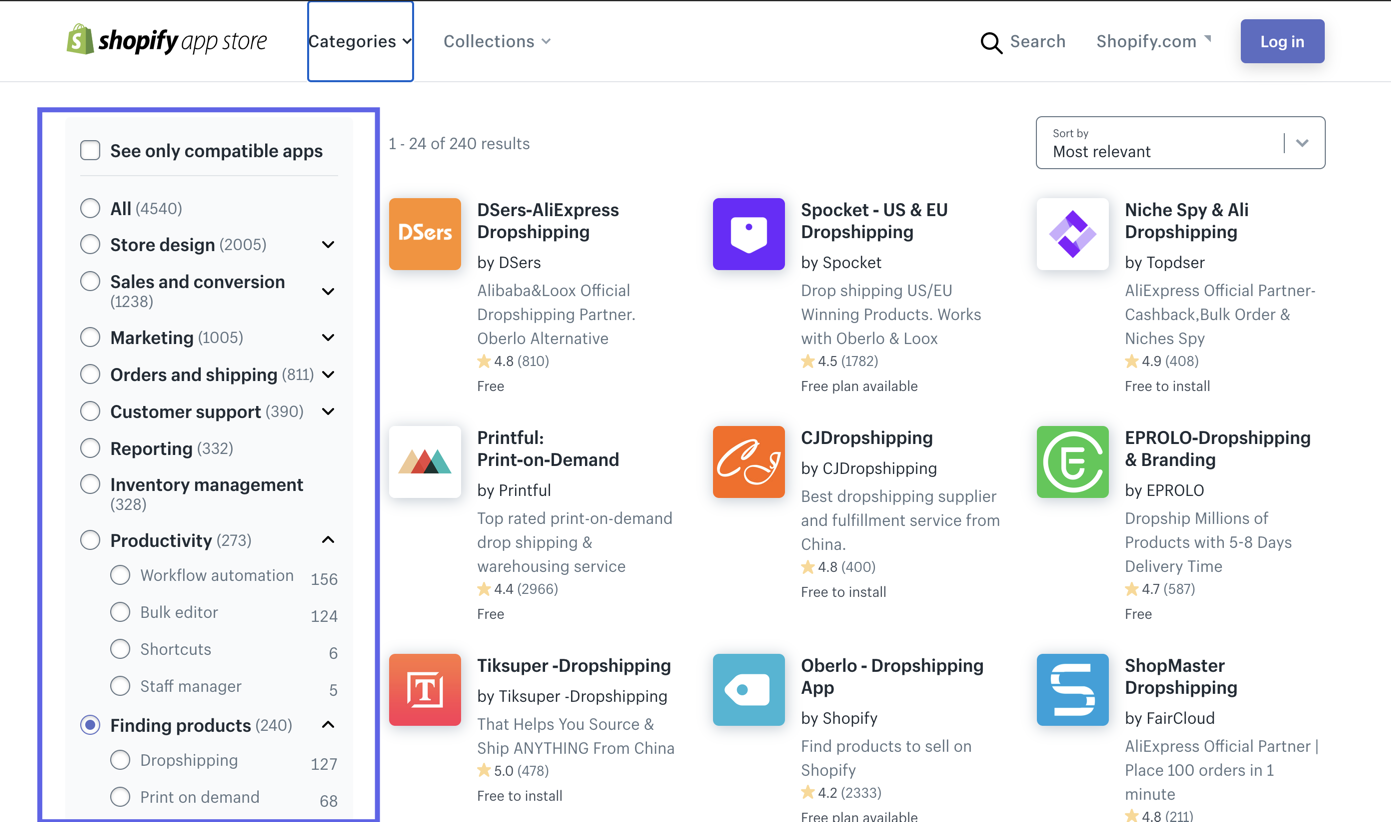
Research the current app landscape to identify gaps and opportunities. Engage with the Shopify merchant community through forums and social media to gain insights into their challenges and needs.
Develop a minimum viable product (MVP) and gather feedback from beta testers to refine your app before launching.
Also Read - Best Shopify Upsell Apps: 7 Top Choices to Boost Sales in 2024
6. Monetize Social Media
Social media platforms offer powerful channels for driving traffic and sales to your Shopify store.
To effectively monetize social media, develop a strategy that aligns with your brand identity and appeals to your target audience. This involves choosing the right platforms, creating engaging content, and leveraging advertising opportunities.
Identify which social media platforms your target customers use most and focus your efforts there.
Create a content calendar to ensure a consistent posting schedule that keeps your audience engaged and informed. High-quality visuals, compelling captions, and strategic use of hashtags can increase your reach and engagement.

Engage with your audience by responding to comments, messages, and mentions. This not only builds a community around your brand but also boosts your social media algorithms, increasing your visibility. Collaborate with influencers and content creators in your niche to tap into their audiences and gain credibility.
7. Build an Email List
An email list is an invaluable asset for direct communication with your customers and prospects. Building your list can be accelerated through the strategic use of popups on your Shopify store.
Offer a compelling incentive for visitors to subscribe, such as a discount code, free shipping, or access to exclusive content.
Design your popups to be engaging but not intrusive, appearing after a visitor has spent a certain amount of time on your site or is about to exit.
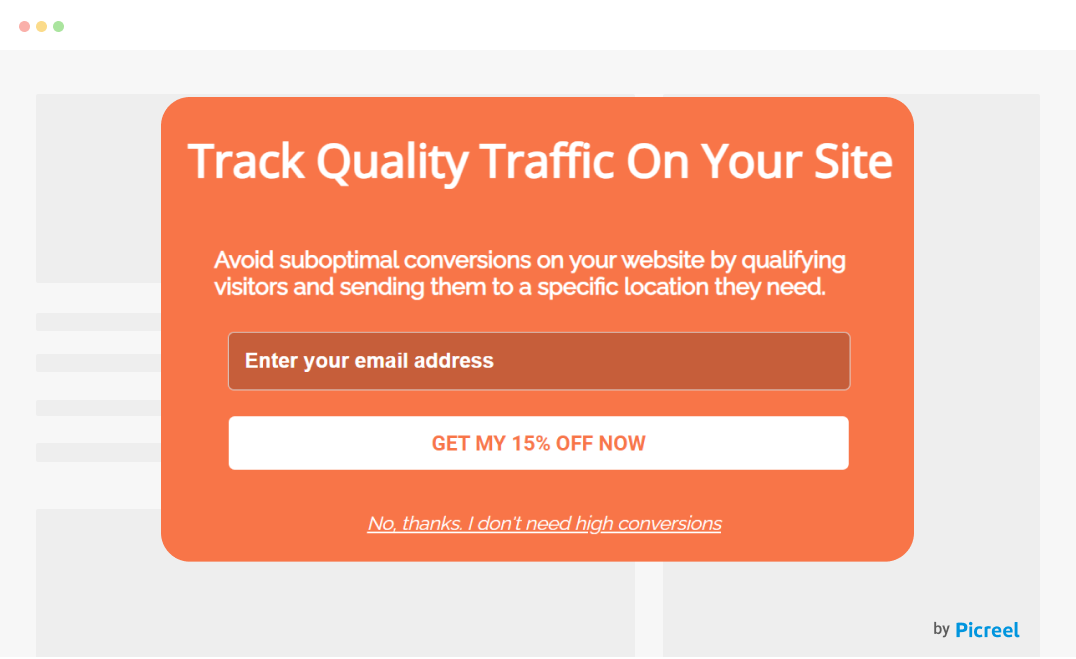
Segment your email list based on customer behavior, preferences, and purchase history to deliver personalized and relevant content. Regularly clean your email list to maintain high engagement rates and deliverability.
Leverage email marketing to nurture relationships with your subscribers, providing them with valuable content, exclusive offers, and updates about your products and brand.
8. Use Exit-Intent Popups
Exit-intent popups are a powerful tool to capture the attention of visitors about to leave your site without making a purchase.
These popups can be designed to offer a last-minute discount, promote a special offer, or encourage visitors to subscribe to your email list, providing a second chance to convert them into customers.
To implement exit intent popups effectively, ensure you use tools like Picreel and create an offer that is compelling enough to persuade the visitor to stay or provide their contact information. Personalize the messaging based on the visitor’s behavior on your site, such as the pages they visited or the products they viewed.

Test different designs and messages to determine what works best for your audience. Use analytics to track the performance of your exit intent popups, optimizing them over time to improve conversion rates.
9. Display Dynamic Product Recommendations
Dynamic product recommendations are a sophisticated way to personalize the shopping experience on your Shopify store, increasing average order value and customer satisfaction.
These recommendations can be based on a variety of factors, including browsing history, purchase history, and products frequently bought together.

Implementing dynamic recommendations requires a deep understanding of your customers and products.
Utilize Shopify’s built-in tools or third-party popup maker tools that easily integrate with Shopify to analyze customer data and display personalized product suggestions at strategic points in the shopping journey, such as on product pages, in the cart, or during checkout.
Also Read - Product Recommendations: Top 15 Examples and Tactics All Experts Swear By
10. Run Automated A/B Tests
A/B testing, or split testing, is a methodical approach to optimizing your Shopify store by comparing two versions of a web page, email, or ad to see which performs better.
Automated A/B testing tools allow you to test various elements of your store, including headlines, product descriptions, images, and call-to-action buttons, to determine what changes lead to improved performance.
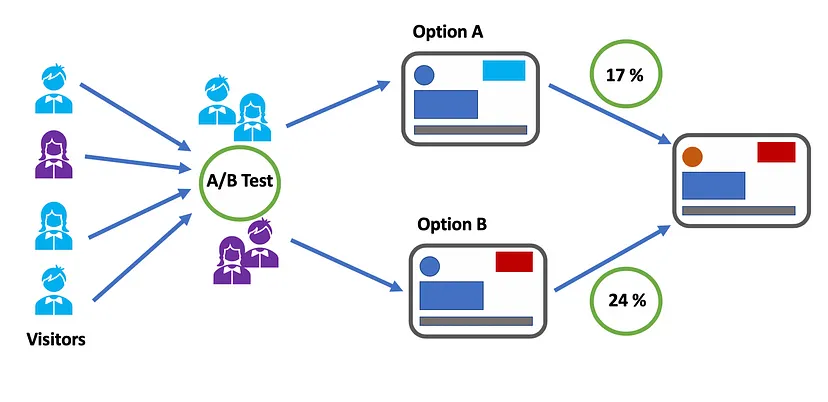
Identify key metrics for each test, such as conversion rate, click-through rate, or average order value. Use a statistically significant sample size and testing period to ensure your results are reliable.
Analyze the data to understand customer preferences and behaviors, applying your insights to optimize your store’s design and content.
Make Money on Shopify Using the Best Strategies
Running a Shopify store in 2024 requires a blend of innovation, strategic insight, and a deep understanding of consumer behavior.
By adopting these comprehensive strategies, entrepreneurs can not only leverage Shopify’s powerful platform to its fullest potential but also create meaningful connections with their customers.
This approach ensures not just short-term gains but also long-term sustainability and growth in the competitive landscape of e-commerce.
Embrace these methods to transform your Shopify venture into a thriving online business, capitalizing on trends, technology, and the ever-evolving demands of the digital marketplace.
 Tips
Tips
We’d love to hear your tips & suggestions on this article!
FREE. All Features. FOREVER!
Try our Forever FREE account with all premium features!

 We'd love your feedback!
We'd love your feedback! Thanks for your feedback!
Thanks for your feedback!







